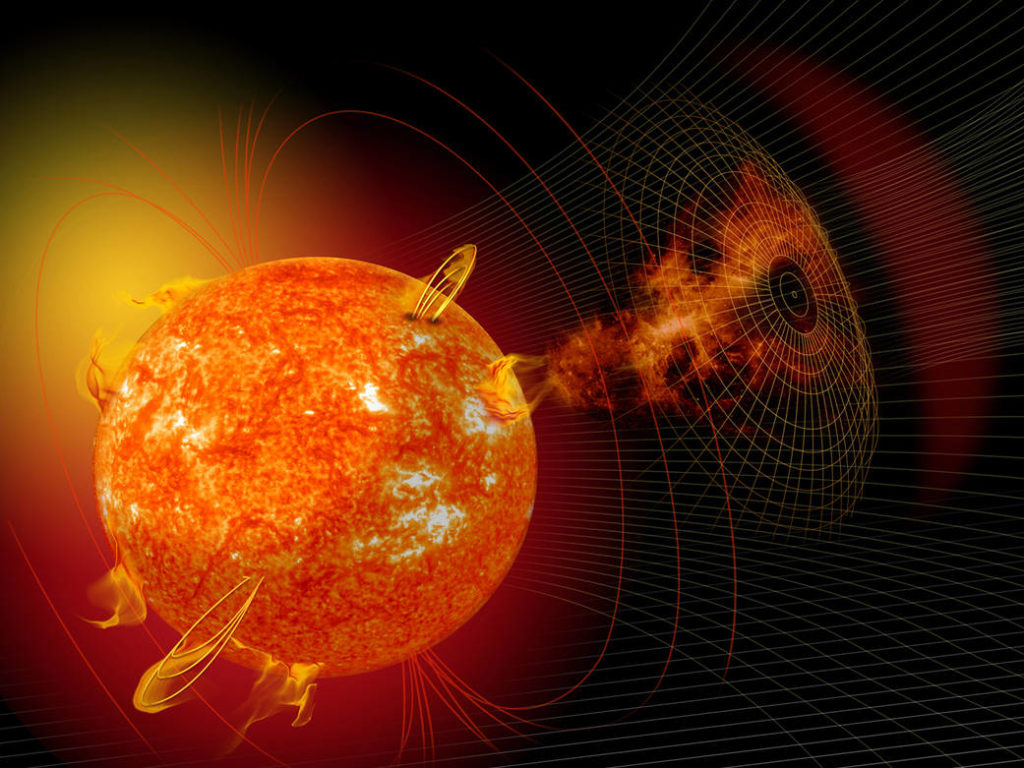
A powerful solar storm continues to impact Earth today, prompting space weather experts at the Space Weather Prediction Center (SWPC) inside NOAA to issue a Geomagnetic Storm Warning for strong storm conditions today. While some electrical, navigation, and communication issues are possible, this new event could bring aurora much more south than usual, lighting up skies free of cloud and light pollution with dancing shades of green, purple, and perhaps even red.
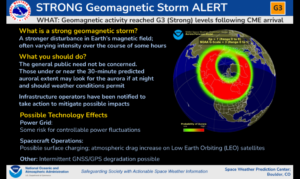
According to the SWPC, G3 storm levels were observed on Earth today; storms are ranked on a 1-5 scale with 5 being the most severe and potentially destructive. A Coronal Mass Ejection (CME) is responsible for today’s big storm.
“Enhanced solar wind conditions are expected to prevail over November 5-7,” warns the SWPC. “Continued CME influences are expected early over November 5 due to the
passage of the October 31 CME and possibly the November 2 CME. An additional
enhancement in the solar wind environment is expected late on November 5 through early on November 7 due to the anticipated arrival of a CME from November 3,” they added, describing a series of potent Earth-bound CME’s released by the Sun which are bombarding the Earth with energy.
Coronal Mass Ejections (CMEs) are large expulsions of plasma and magnetic field from the Sun’s corona. They can eject billions of tons of coronal material and carry an embedded magnetic field, frozen in flux, that is stronger than the background solar wind interplanetary magnetic field (IMF) strength. CMEs travel outward from the Sun at various speeds, with some reaching the Earth as quickly as 15-18 hours and others requiring days to arrive. According to the SWPC, CMEs expand in size as they propagate away from the Sun and larger ones can reach a size comprising nearly a quarter of the space between Earth and the Sun by the time it reaches our planet.
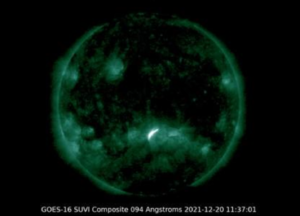
As the CME interacts with Earth and its magnetosphere, a variety of things could unfold based on the amount of energy hitting and the angle it impacts the Earth.
Geomagnetic storms can disrupt electronics and electrical systems, interfere with spacecraft and satellite communication, and also trigger brilliant displays of the aurora in the night sky.
In most geomagnetic storms, weak power grid fluctuations could occur, especially at northern latitudes. Minor impacts on satellite operations could also be possible. Aurora could also be visible more south than it usually is; in this case, it could extend as far south as Washington to Iowa to New York. Should the geomagnetic storm become stronger, aurora could be brighter and could appear even more south.
We expect #aurora to light up a large part of the night sky free of light pollution across North America tonight. https://t.co/Na8BqqIl8i
— the Weatherboy (@theWeatherboy) November 5, 2023
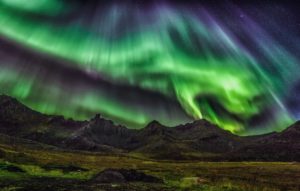
NOAA forecasters analyze a variety of solar data from spacecraft to determine what impacts a geomagnetic storm could produce. Analyzing data from the DSCOVER and ACE satellite is one way forecasters can tell when the enhanced solar wind from a coronal hole is about to arrive at Earth. A few things they look for in the data to determine when the enhanced solar wind is arriving at Earth:
• Solar wind speed increases
• Temperature increases
• Particle density decreases
• Interplanetary magnetic field (IMF) strength increases
While these solar events can help illuminate the sky with stunning aurora, they can also do considerable harm to electronics, electrical grids, and satellite and radio communications. One such incident happened on Earth at a time there was very little electronics on Earth in 1859.

Image: NASA/Mary Pat Hrybyk-Keith
The 1859 incident, which occurred on September 1-2 in 1859, is also known as the “Carrington Event.” This event unfolded as powerful geomagnetic storm struck Earth during Solar Cycle 10. A CME hit the Earth and induced the largest geomagnetic storm on record. The storm was so intense it created extremely bright, vivid aurora throughout the planet: people in California thought the sun rose early, people in the northeastern U.S. could read a newspaper at night from the aurora’s bright light, and people as far south as Hawaii and south-central Mexico could see the aurora in the sky.
The event severely damaged the limited electrical and communication lines that existed at that time; telegraph systems around the world failed, with some telegraph operators reporting they received electric shocks.
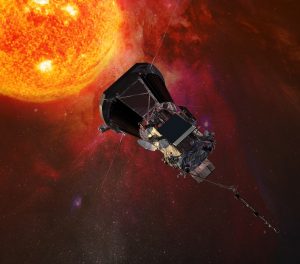
A June 2013 study by Lloyd’s of London and Atmospheric and Environmental Research (AER) in the U.S. showed that if the Carrington event happened in modern times, damages in the U.S. could exceed $2.6 trillion, roughly 15% of the nation’s annual GDP.
While typically known for their weather forecasts, the National Oceanic and Atmospheric Administration (NOAA) and its National Weather Service (NWS) is also responsible for “space weather.” While there are private companies and other agencies that monitor and forecast space weather, the official source for alerts and warnings of the space environment is the Space Weather Prediction Center (SWPC). The SWPC is located in Boulder, Colorado and is a service center of the NWS, which is part of NOAA. The Space Weather Prediction Center is also one of nine National Centers for Environmental Prediction (NCEP) as they monitor current space weather activity 24/7, 365 days a year.